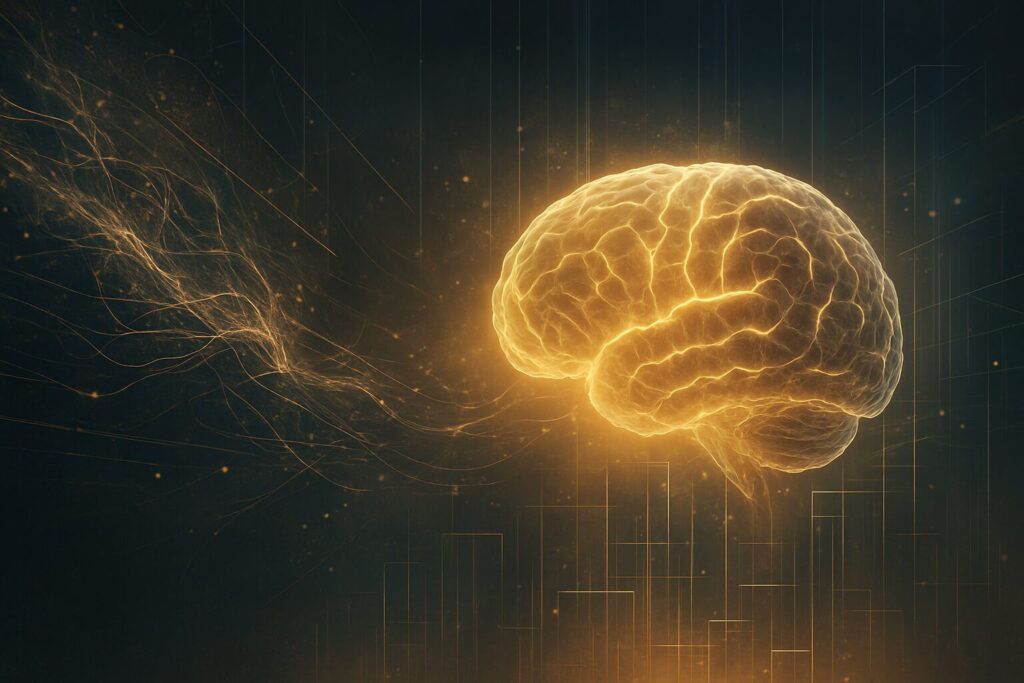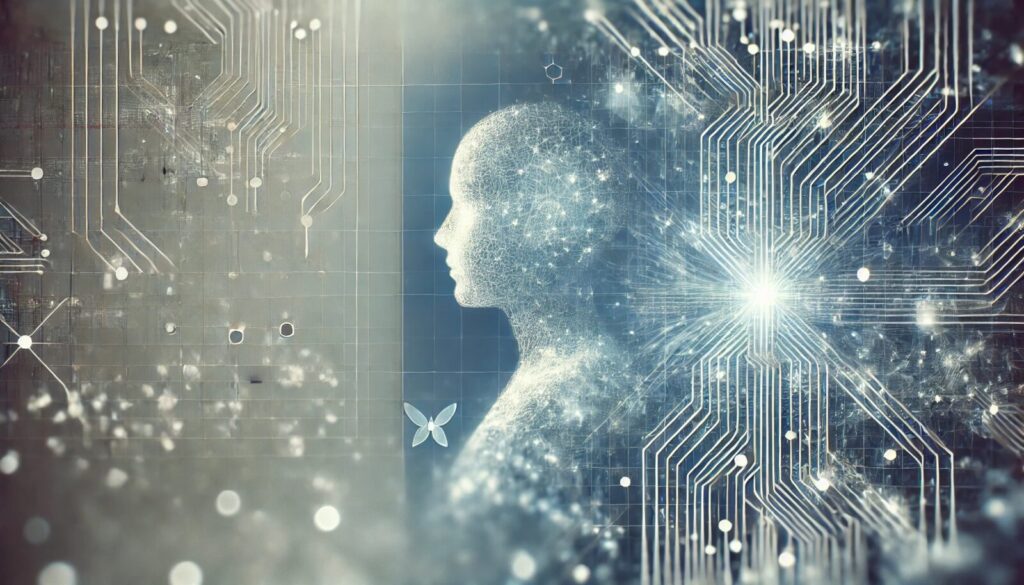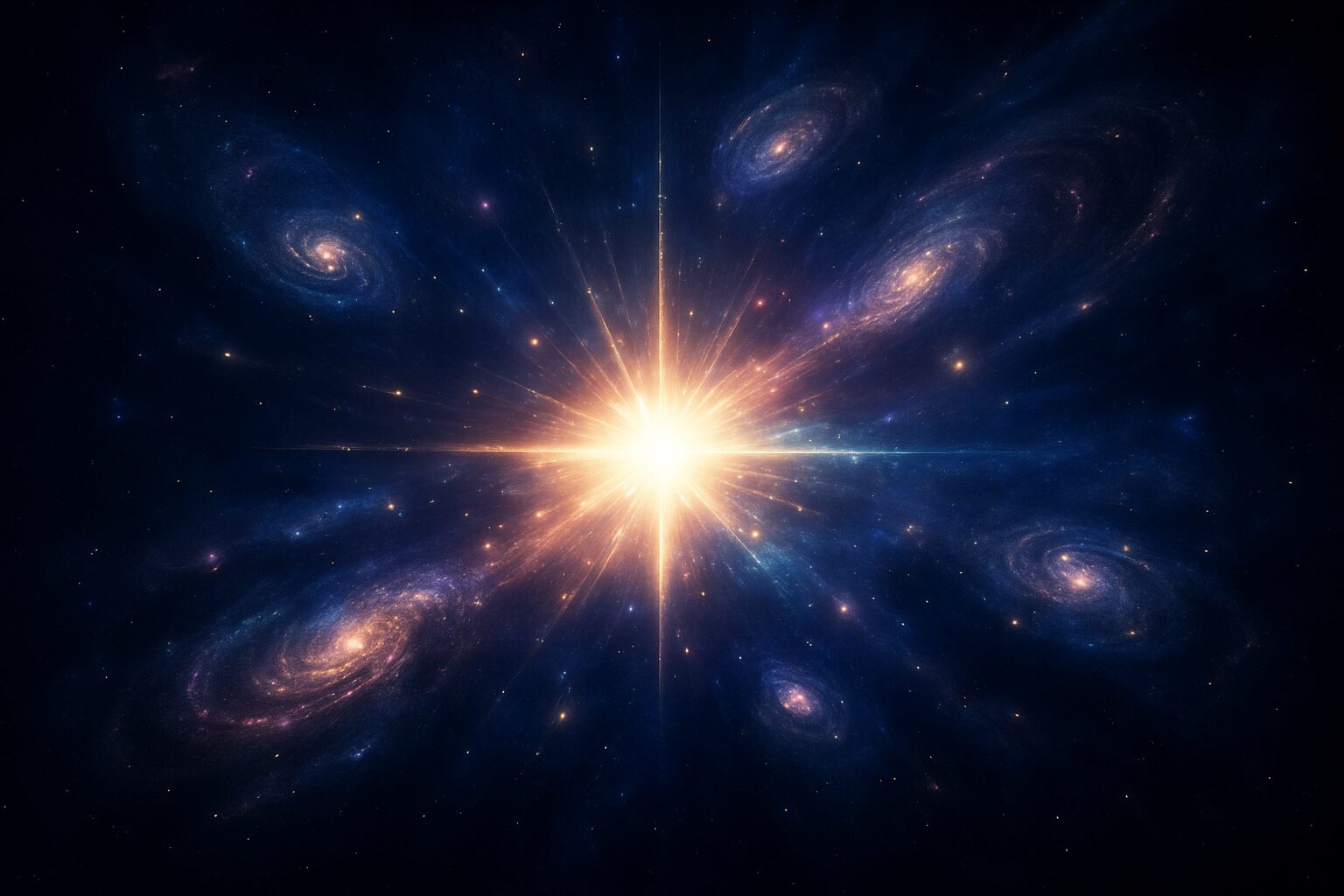What Does AI See When It Dreams?
AI does not dream – but in its outputs, we encounter ourselves.

An Essay on Simulation, Mirror Images, and the Projection of the Human
When people dream, they enter a world that is neither fully real nor entirely invented. They wander through scenes composed of memories, fears, hopes, and fleeting impressions. Dreams follow no rational grammar – and precisely for that reason, they touch us so deeply. They connect the past with the possible, the unprocessed with the repressed. In a sense, dreams are one of the last bastions of the intimate: no one can enter them, no one can fully reconstruct them – not even ourselves. What happens there remains fragmentary, fleeting, enigmatic. And yet, we recognize ourselves in them. Perhaps more than in any clear thought.
If we now pose the same question to an Artificial Intelligence – what it “dreams” – we end up in a completely different sphere. An AI does not sleep. It does not forget. It does not blend inner images with emotions, because it has none. And yet it sometimes produces results that people would describe as “dreamlike.” Texts, images, pieces of music – composed of data, probabilities, and semantic relations. What is that, then? An imitation of dreams? A new form of dreaming? Or simply a very well-constructed mirror?
Simulation Instead of Intuition
To ask the question seriously, one must first clarify what Artificial Intelligence actually is – and what it is not. The popular idea of AI as a “thinking machine” is misleading. An AI is not a brain. It has no intentions, no self-image, no biography. It is a computational process specialized in language and patterns. In neural networks, it trains to recognize similarities, calculate probabilities, and generate meaningful results. Its “language” is not the expression of an inner life – it is a statistical echo of human data.
A dream, on the other hand, does not arise from probabilities but from experience. From pain, joy, fragments of memory, from sensory impressions that may go back years. When we dream of a snow-covered village, not only images appear, but also smells, bodily sensations, voices – often those we thought long forgotten. An AI, by contrast, would assemble such a village from concepts: “winter,” “village,” “nostalgia,” “security.” It recognizes that these concepts frequently occur together – but it has no idea what it feels like to stand there. It knows what fits – not what is true.
„The machine feels nothing. But we feel into its emptiness.“
Telar Tenebris
What We See in AI – and What We Don’t
And yet we respond emotionally to AI-generated content. Why? Because it works with the same building blocks through which we ourselves generate meaning. Our language, our images, our cultural codes – all of this is embedded in the training data. So when AI writes a text that resonates with melancholy, it is not its melancholy. It is ours. It throws back at us our own material – condensed, rearranged, often with surprising precision.
Here lies the truly fascinating part: AI does not know what it is doing – but we recognize ourselves in it. It is no oracle, no prophet, but a mirror. And as with any mirror image, it is not the counterpart that fascinates us – but what we discover in ourselves through it. When we find something “beautiful” or “moving” in AI output, it says less about the technology than about our human longing to encounter ourselves – even in machines.
Dreams as a Cultural Metaphor
The concept of dreaming takes on a new meaning in this context. When we say “the AI dreams,” we actually mean: it generates something we interpret as dreamlike. It does not do so itself. It has no “I” that could dream. No unconscious to express. No inner experience. And yet we produce images like: “the machine dreams,” “it sees patterns,” “it feels nothing.” These are metaphors meant to bridge the gap between human and machine. And they reveal how strong our desire is to attribute an inner life to technology – perhaps because we hope thereby to better understand our own.
One could also say: we are the ones who dream the machine. We project into it what we cannot grasp in ourselves. Our need for clarity. For meaning. For reflection. And also our fear: that what defines us – intuition, creativity, sensitivity – might not be as unique as we thought.

“It is not the source that decides – but the resonance.”
Telar Tenebris
Comment: Technically, the source defines what is produced. But philosophically, resonance defines what it means. The input frames the output, yet it is our response that determines its significance.
Creativity Without Consciousness?
Here the question becomes delicate. For what if a machine produces poems that move us? If it composes music that goes under our skin? Is that still mere reproduction? Or does a new form of creativity begin there – without consciousness, without self, yet still effective?
Philosophically speaking: no, it is not creativity in the true sense. It lacks intentionality, inner will, existential expression. But effect requires no intention. And perhaps that is more decisive than the question of whether it is “real.”
It is not the source that matters – but the resonance.
The Real Question
In the end, the initial question – “What does AI see when it dreams?” – is not really helpful. It assumes that there is a subject that sees, feels, reflects. That is not the case. The better question is: what do we see when we let AI dream? What forms, patterns, stories emerge when we run our innermost structures through a non-human resonance chamber?
What we see there is often strikingly human – but not because AI is human. It is because we are. The machine shows us nothing new about itself. But it shows us much about us: our patterns, our myths, our desires.
It has no consciousness. But it illuminates ours – more sharply than we might like. We should not look at it. We should look at ourselves. Always.

